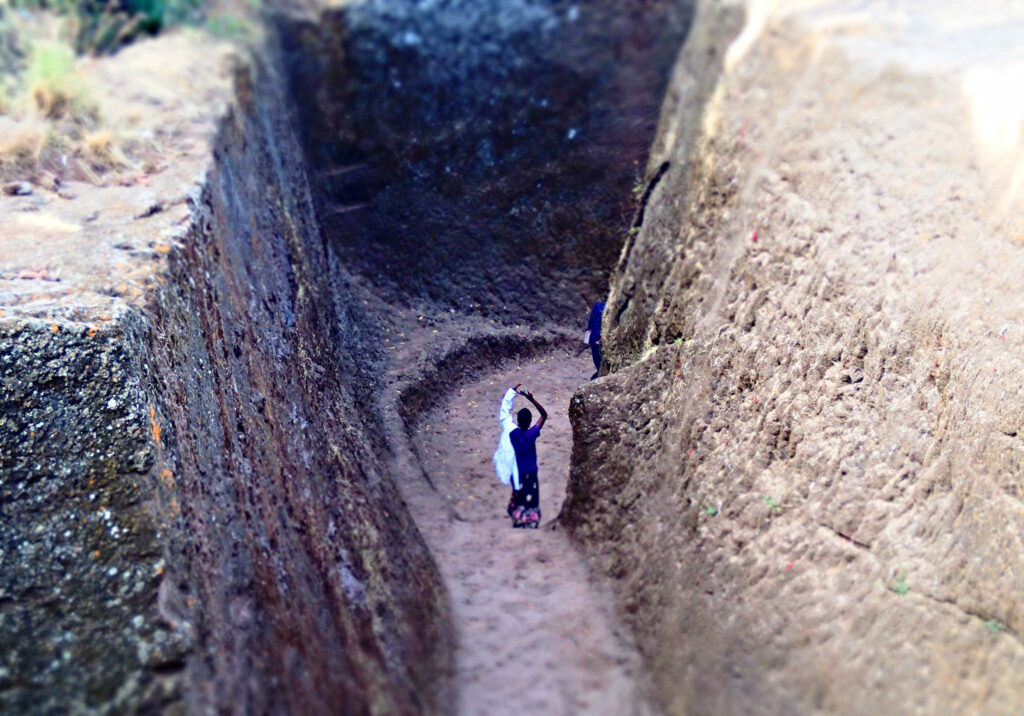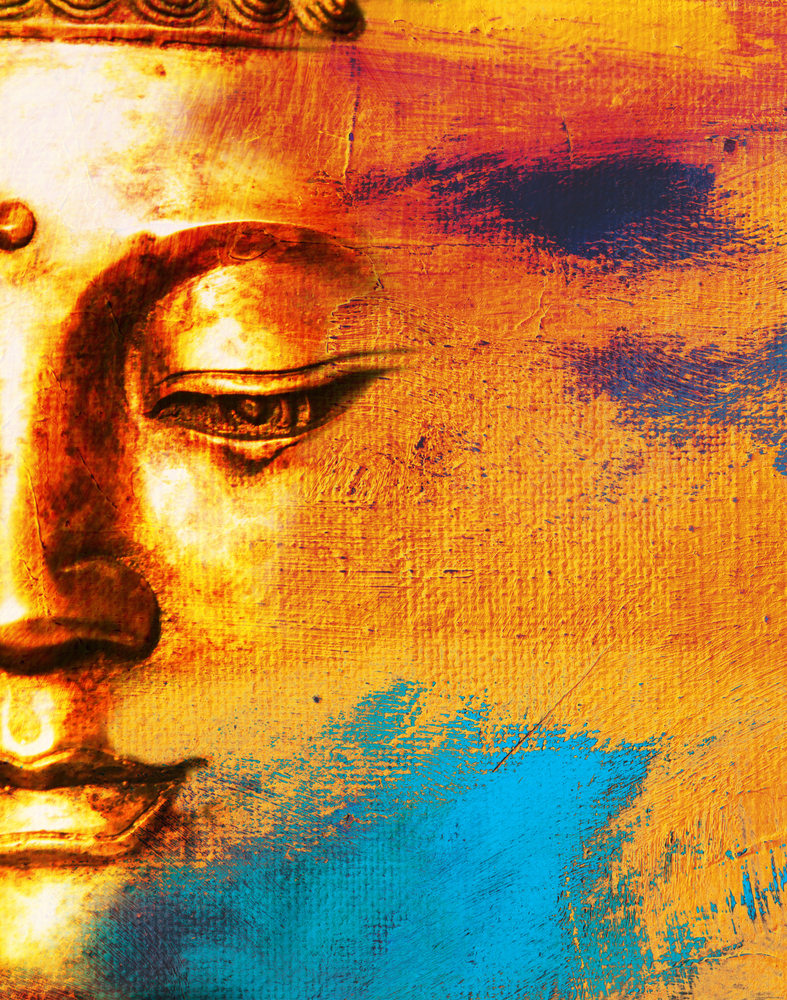“No one is forgotten. It is a lie, any talk of God that does not comfort you.” ~Meister Ekhart
Milarepa, the most famous saint in the Himalayas, was a Tibetan youth whose family was terribly abused by relatives after his father died. As a result, Milarepa was urged by his mother to study black magic and take revenge on those who had mistreated them. With yogic powers he killed many of them. But afterward, Milarepa was filled with fear and remorse and sought out a Buddhist teacher to help him release his bad karma. Through years of extreme penance and a series of harrowing trials, Milarepa atoned for his terrible past. Then Milarepa dedicated his life to awakening and spent years teaching and caring for others. The story of his redemption is the most celebrated myth in all of Tibetan Buddhism.
In the same way, redemption transformed the worst killer of the Buddha’s era, Angulimala. Indian astrologers said Angulimala was born under a robber star. Through the jealousy and lies of those around him, Angulimala was convinced that his religious duty required him to kill a thousand innocent people. Living in the thick Jalini forest, he became the most feared figure of his day, a swordsman who could run as fast as a swift horse.
The Buddha deliberately went wandering there, even though others warned him not to go. When Angulimala chased the Buddha, magic powers thwarted him. “Stop! Stop!” shouted Angulimala. The Buddha responded, “I have stopped, I have stopped all harm to living beings.” Somehow the Buddha’s fearlessness was enough to break the spell of misguided destruction. Then the Buddha demanded that Angulimala cut off the limb of a tree. When the limb was cut, the Buddha said, “Now put it back.” When Angulimala acknowledged that he was helpless to do so, the Buddha explained, “Your power is so limited, it can only destroy life. What about the power to preserve life?” Angulimala then threw away his sword to become a monk and eventually a respected disciple of the Buddha. Like Milarepa, Angulimala is now widely venerated as a saint. The great popularity of these stories speaks to the universal need for redemption, to reclaim our nobility.
Twice a month, at the full and new moon, the monks and nuns of the forest monastery seek release from the past misconduct through formal practices of confession. They ritually gather together under the canopy of trees to confess their mistakes, seek understanding and ask for forgiveness. Each confession ends with a commitment to start anew. For serious difficulties, a council of ten or twenty elders is called to listen to the confession with compassion. Then the elders prescribe practices of atonement and transformation to help the monk or nun refind their way.
In this spirit, one of the common practices that Buddhist psychologists and teachers use to help students of the past is to listen to their confessions. Sometimes we hear their small regrets. We work with compassion, forgiveness and letting go. We know that this unhealthy past is not who they really are. Sometimes students reveal the worst of their deeds. Whatever is weighing on our hearts is where we work.
Confession is a necessary practice in psychology. In 1974, I was on the founding faculty of Naropa Buddhist University in Boulder, Colorado. The summer’s largest class, taught by Ram Dass, was focused on paths to liberation. On the full moon in July, over a thousand students from Ram Dass’ class joined together for an all night ritual at the foot of the Rocky Mountains. The students and some of us teachers began the night with chanting, prayers and meditation. At the center of our circle was a huge bonfire lit in honor of the Indian goddess Kali. Kali represents destruction, especially of the false sense of self, and through this process she gives birth to the indestructible spirit.
As the night went on, students attending the ritual were invited to write down whatever difficulties they needed to let go of to become free and offer them to the Kali fire. Before they approached the fire however, they had to read their paper aloud, in ritual fashion, to Ram Dass who stood quietly off to one side. Then Ram Dass blessed them. All night, one by one, the students revealed their most difficult secrets, then placed their suffering to be transformed in the blaze. Standing nearby, we could see relief, even joy in their faces as they returned to rejoin us. The next day Ram Dass described to us, his colleagues, the burdens that were on those papers. There were a hundred forms of shame and fear. There was widespread pain around sexuality. There was unworthiness and self-judgment. There was guilt and regret for past mistakes. For each, there was a need to forgive and start over.
My teacher and friend, Maha Ghosananda, the Ghandi of Cambodia, was nominated for the Nobel Peace Prize many times. Trained as a Buddhist scholar, he spoke 15 languages and traveled widely. Because he was practicing in the forest monasteries of Thailand during the Cambodian genocide, he was one of the few elders left alive. The Khmer Rouge killed 57,000 out of 60,000 monks and nuns, along with Maha Ghosananda’s whole family. In response, Maha Ghosananda began to teach forgiveness and reconciliation to hundreds of thousands in the Cambodian refugee camps. A gentle presence, he printed tens of thousands of copies of the teaching on loving-kindness to give to everyone he met.
When I worked with him, he began leading thousands of refugees home in peace walks though the most war torn parts of the country. They chanted “Hatred never ceases by hatred, but by love alone is healed,” as they walked through the jungle roads. Though honored as the Supreme Head of Cambodian Buddhism, Maha Ghosananda led a simple life. For almost two decades, he carried the message of forgiveness on foot across Cambodia to offer a vision of love to the dispossessed, the broken and the frightened. He also worked with the communities of displaced Cambodians in the United States. When he would appear, the refugees of that area would come together to offer a huge community meal before his teaching. But around several of the Cambodian-American temples there had grown violent factions. As Maha Ghosananda explained, the warring factions in Cambodia had brought some of the war to America with them.
In each temple, Maha Ghosananda gave teachings on compassion for all who had suffered, no matter which side they had been on. He explained the Buddha’s words, “In war there are no victors.” He spoke to the traumatized community members one by one, older men, younger gang leaders, mothers, men who in Cambodia may have participated in terrible deeds. He listened to their stories and confessions, he chanted words of reconciliation, he spoke of innate goodness and prescribed practices to strengthen their capacity for transformation. And, most importantly, he held each person in love and esteem. He told them that no matter what had happened, they could start again. He beamed so much love at each one that for a time they couldn’t hold on to their limited, old sense of self. His loving heart became a touchstone for many in these communities, a ground from which their redemption could begin.
Like the Cambodians, many Americans, too, still live with the trauma of our wars. Lloyd Burton, now a Buddhist teacher and Vietnam veteran, used mindfulness and loving kindness to find healing. I have recounted his tale in one of my previous books, but it is such an articulate and heartfelt narrative that I want to print it again. In his own words, Lloyd describes a meditation retreat where he found redemption for the terrible atrocities he had witnessed as a soldier.
“I had served as a field medical corpsman with the Marine Corps ground forces in the early days of the war in the mountainous provinces on the border of what was then North and South Vietnam. Our casualty rates were high, as were those of the villagers we treated when circumstances permitted.
It had been eight years since my return when I attended my first meditation retreat. At least twice a week for all those years I had sustained the same recurring nightmares common to many combat veterans: dreaming that I was back there facing the same dangers, witnessing the same incalculable suffering, waking suddenly alert, sweating, scared. At the retreat, the nightmares did not occur during sleep, they filled the mind’s eye during the day, at sittings, during walking meditations, at meals. Horrific wartime flashbacks were superimposed over a quiet redwood grove at the retreat center. Sleepy students in the dormitory became body parts strewn about a makeshift morgue on the DMZ. What I gradually came to see was that as I relived these memories as a thirty year old spiritual seeker, I was also enduring for the first time the full emotional impact of experiences that as a twenty-year old medic I was simply unprepared to withstand.
I began to realize that my mind was gradually yielding up memories so terrifying, so life-denying, and so spiritually eroding that I had ceased to be consciously aware that I was still carrying them around. I was, in short, beginning to undergo a profound catharsis by openly facing that which I had most feared and therefore most strongly suppressed.
At the retreat I was also plagued by a more current fear, that having released the inner demons of war I would I would be unable to control them, that they would now rule my days as well as my nights, but what I experienced instead was just the opposite. The visions of slain friends and dismembered children gradually gave way to other half-remembered scenes from that time and place: the entrancing, intense beauty of a jungle forest, a thousand different shades of green, a fragrant breeze blowing over beaches so white and dazzling they seemed carpeted by diamonds.
What also arose at the retreat for the first time was a deep sense of compassion for my past and present self: compassion for the idealistic, young would-be healer and physician forced to witness the unspeakable obscenities of what humankind is capable, and for the haunted veteran who could not let go of memories he could not acknowledge he carried.
Since the first retreat the compassion has stayed with me. Through practice and continued inner relaxation, it has grown to sometimes encompass those around me as well, when I’m not too self-conscious to let it do so. While the memories have also stayed with me, the nightmares have not. The last of the sweating screams happened in silence, fully awake, somewhere in Northern California many years ago.”
We each need to find ways to redeem our past and return to our own nobility. No one experiences this need more actively that those who have committed serious crimes. In recent years, I have helped with several prison meditation projects that seek to change our enormous and destructive prison system. There are a number of former prisoners involved in prison meditation projects, many of who had served over twenty years. I wanted to support the growing movement of prison rehabilitation and the people whose years of inner struggle and courage had allowed them to transform their lives. One of them, Anita, was a 39 year old woman whose warmth and understanding were immediately apparent. Two years before, she had been released after serving fourteen years as a reluctant accomplice to a botched armed robbery. Anita described how hardened and territorial people become in the degrading conditions of prisons. To stay sane, the women in her maximum security prison established simple routines and strict boundaries in sharing their tiny cells. Periodically these routines would be disrupted by the intrusion of short-timers, women who were serving less than a year, who, because of overcrowding, were forced to double up in long term cells. These short term women were usually pushed away and ignored.
When Sarah, a quiet young woman, came into Anita’s cell for four months, Anita was wary and closed. “This is where you can put your things, here’s the part of the cell you use and don’t go beyond it.” For many days Anita observed as her new cellmate sat sick and depressed on her bed and would hardly take food. Then she began to throw up, especially in the morning. Finally it dawned on Anita that her cellmate was pregnant. Anita thought about this young woman and about the baby. It didn’t seem right for this depressed young mother to starve herself. She was hurting her baby. Soon Anita found herself comforting Sarah and listening to the whole story of her life. Slowly, she became her confidante, her protector, her supporter, making her more comfortable and making sure she was eating. Word about the pregnant girl got out and women up and down the maximum-security cellblock began to help with special food and comfort. The impulse of compassion for Sarah and her baby became communal; it brought the prisoners together.
Some months after Sarah was released, news came back that her child, named Julia, was safely delivered. Anita recalled the amazing cheer that went up among the prisoners, who felt themselves to be Julia’s aunties and grandmothers. New life had touched the sorrow of their cells. And more than anyone, Anita was changed. She told our conference group that the new life in Sarah had opened her barricaded heart and started her on a six year path of healing and redemption. Now on the outside, Anita works at a project to assist other incarcerated women.
Anita, who had felt so hard, discovered new life in herself. I have seen this new life in the faces of certain men to whom I have taught meditation in prisons like San Quentin who say, “I did something really terrible and stupid when I was eighteen and messed up on drugs. Now I’m forty-three, a quarter of a century later, and I am not that person anymore.” Of course, there are some men in San Quentin who are still violent, even psychopathic. But psychopaths are not found just in prison; they also head governments in many parts of the world. The good news is that many prisoners do change, even in the harsh environment of prison.
Transformation is not just an abstract or idealistic promise; it is an actual physical possibility. For years scientists erroneously believed that the development of the brain and nervous system was complete at the age twenty or twenty-five. Recently modern neuroscience has discovered “neuroplasticity,” confirming what was known by Buddhist psychology for millennia: even adults can change. The adult brain and nervous system grow and change throughout our lives. Until the very end, we are neurologically transformed by whatever we practice. We are not limited by the past.
This excerpt is taken from the book, “The Wise Heart“





